When traveling to a new country, we always have questions that pop up at the last minute. Important stuff that we forgot to ask or that we didn’t know to ask. In this blog, you’ll find just about everything you need to know before traveling to Ecuador and Galapagos.
TALK TO A DESTINATION EXPERT

Diego Zapata

Rosa Mena

Sandy Lara

Diego Zapata

Rosa Mena

Sandy Lara
Everything You Need to Know Before Traveling to Ecuador and the Galapagos
Do I need Health Insurance when traveling to Ecuador?
It is highly recommended for international travelers to have health insurance. Also, it’s very important that you check if your tour operator or accommodation has protocols in place to keep you safe and act promptly in case something happens. For instance, since we know the value of exploring with ease, all our Galapagos Cruises have a medical officer on board, available 24/7, and a perfectly equipped infirmary.
Do I need a visa to enter Ecuador?
If the purpose of your trip is tourism, you will not be required to apply for and acquire a visa beforehand. Once you enter the country, you will be granted a free 90-day tourist visa. As long as your passport is valid (see below), visitors can stay in Ecuador for up to 90 days.
Passport Validity
Ecuador requires that all travelers entering the country have passports that are valid for up to six months post departure date. This means that if, for example, you are traveling to Ecuador from the 10th of March to the 25th of March, and your passport expires in 6 months from March 23rd, you will not be allowed to travel. Ask one of our Destination Experts about your passport’s validity and make sure it’s up to date before your trip to Ecuador!
We recommend that you make copies of all your important documents and leave the originals in the safety box of your hotel. Keep a copy of your passport with you at all times, if possible. It is important that you hold on to the immigration entry form (stamped by the Immigration Authorities upon arrival), as it will be requested when you leave the country.
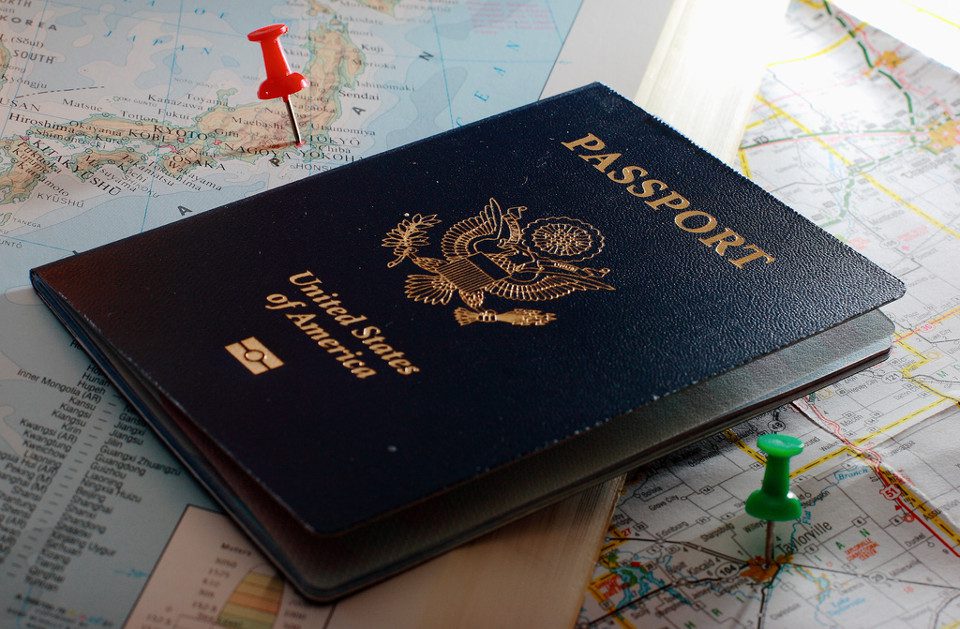
Do I need to show proof of onward travel?
In order to prevent illegal immigration, Ecuador “softly” requests that visitors provide proof of onward travel. Note: Not all immigration officials will choose to enforce this rule by requesting to see proof of onward travel. However, in many cases, this responsibility is passed on to the airline. Consequently: Be sure to double check with your airline before traveling to Ecuador on whether not you’ll need to show them proof of onward travel. Things are a little stricter when it comes to traveling to the Galapagos Islands, as the mandatory Galapagos Transit Control Card (TCC/INGAL) explicitly requires that you provide proof of onward travel out of the Galapagos Islands (that also falls within the parameters of your 90-day tourist visa).
Why do I need to be careful about the sun while in Ecuador?
The equatorial sun is very strong and is able to burn even through cloud cover. It is highly recommended that visitors use sunblock with a suitably high protection factor, along with extra protection such as a with a wide-brimmed hat and sunglasses. Fair-skinned travelers should use sun protection both at high altitudes and at sea level at all times, even if the weather is cloudy, as UV rays do indeed penetrate through the clouds.
What should I pack for my trip to Ecuador?
The key is casual and comfortable. In the highlands, dressing in layers, with clothes that you can either put on or take off as required, is ideal: T-shirt, blouse or shirt, sweater, and a warm jacket, as evenings get chilly. Cottons are ideal for the coast and rainforest. When visiting churches, monasteries, and shrines, women should not wear shorts or miniskirts. Comfortable, walking (and preferably waterproof) shoes are a must.
What language will I need to speak in while I’m in Ecuador?
Ecuador’s official language is Spanish, but Kichwa (also quichua, which is part of the Northern Quechua group of languages) – the lingua franca of the Inca Empire – and shuar are other official languages of certain regions of the country. If you’re an English speaker, don’t worry! You’ll find that in major cities, a considerable portion of the population can speak a little bit of English. By booking a tour through us, and experiencing Ecuador in the company of our guides, you won’t need to worry too much about this language barrier.
What type of currency will I be needing/using?
Ecuador uses the American dollar! Strange, but true! The country officially changed its national currency (the Ecuadorian sucre) to the American dollar after a big economic crisis hit the country in 1999. If possible, it’s highly recommended to bring smaller bills, as change may sometimes be hard to come by (especially in small towns/villages).
Can I use credit cards in Ecuador?
Most hotels, restaurants, and shops accept Visa, MasterCard, Diners Club, and American Express. Cruise ships in the Galapagos also accept most credit cards. Payment for Metropolitan Touring services can be charged to your card. Take note that Travelers’ Cheques are now rarely accepted by establishments.
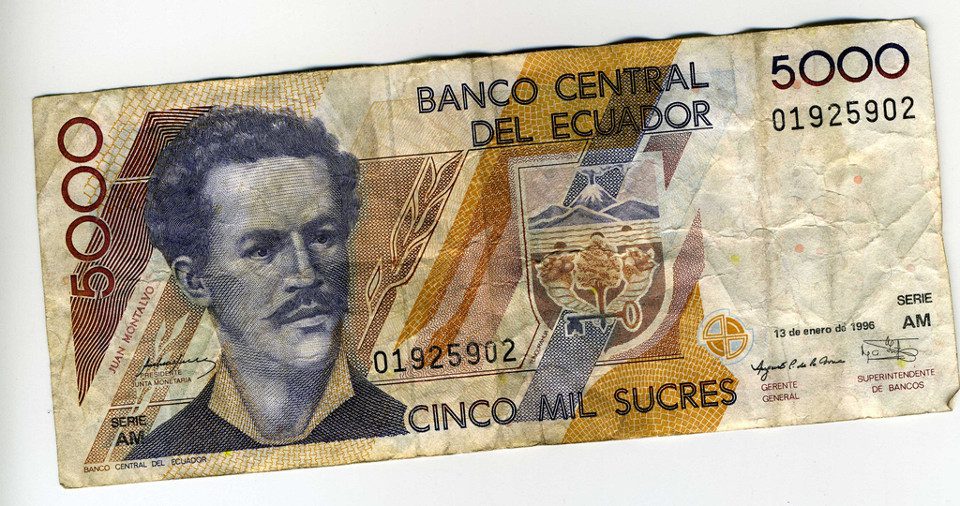
When are banks open in Ecuador?
Most city offices and banks are open from 9:00 a.m. to 5:00 p.m., Monday to Friday. Some currency exchange facilities and banks are also open on Saturday morning, but usually only at major hotels and malls. ATMs are easily found throughout the main cities. Cash advances can be made at most banks or ATMs. In more remote areas, banking facilities and the use of credit cards are far less common, so it’s advisable to carry cash.
Can I drink the tap water in Ecuador?
The tap water in most of Ecuador is potable, but the chemical content varies from place to place. To avoid problems, we recommend that you always drink bottled water. Bottled mineral water, with or without carbonation, is available at all hotels, ships, and lodges. Ecuadorian beer (Pilsener or Club) is excellent and bottled soft drinks are available everywhere. In establishments which we include as part of our programs, juices and salads are perfectly safe to eat.
What time zone is Ecuador in?
GMT/UCT minus 5 hours on Mainland Ecuador and minus 6 hours in the Galapagos Islands.
What religion is practiced in Ecuador?
The predominant religion is Roman Catholic. There is complete religious freedom in Ecuador.
What about electricity/voltage in Ecuador?
110 volts, 60 cycles AC is used. All outlets are for two flat prongs (just like in North America). It is advisable to have an outlet adaptor if you are coming from Europe or other countries that do not use these types of plugs/voltage.
Headed to Galapagos?
Here’s what you need to know before traveling to the Enchanted Islands in Ecuador
What do I need to have to travel to the Galapagos?
When traveling to the Galapagos Islands, visitors will find the mandatory Galapagos Transit Control Card (TCC/INGALA) explicitly requires visitors to provide proof of onward travel out of the Galapagos Islands (that also falls within the parameters of your 90-day tourist visa).
How big are the Galapagos Islands?
The Galapagos Islands consist of an area of approximately 7,900 square kilometers (3,040 square miles). This is an area that’s similar in size to the state of Mississippi.
How do I get to the Galapagos?
Tourists can only access Galapagos via air. Airlines only fly out to Galapagos from the main Ecuadorian cities of Quito and Guayaquil. There are no international, direct flight to Galapagos. Learn more about how to get to Galapagos on our blog.
When is the best time to travel to the Galapagos?
There’s never a bad time to go to the Galapagos islands, as they are a year-round destination! However, the Galapagos Islands have two distinct seasons. From January to June you will experience the hot season, which is when the islands experience their sunniest and greenest of days. During the dry season, from June to December, the Galapagos turn dry and less colorful, but the underwater world fills up with life and movement. However, when it comes to observing wildlife, there is no better or worse time to visit the archipelago. Life is present all year-round!
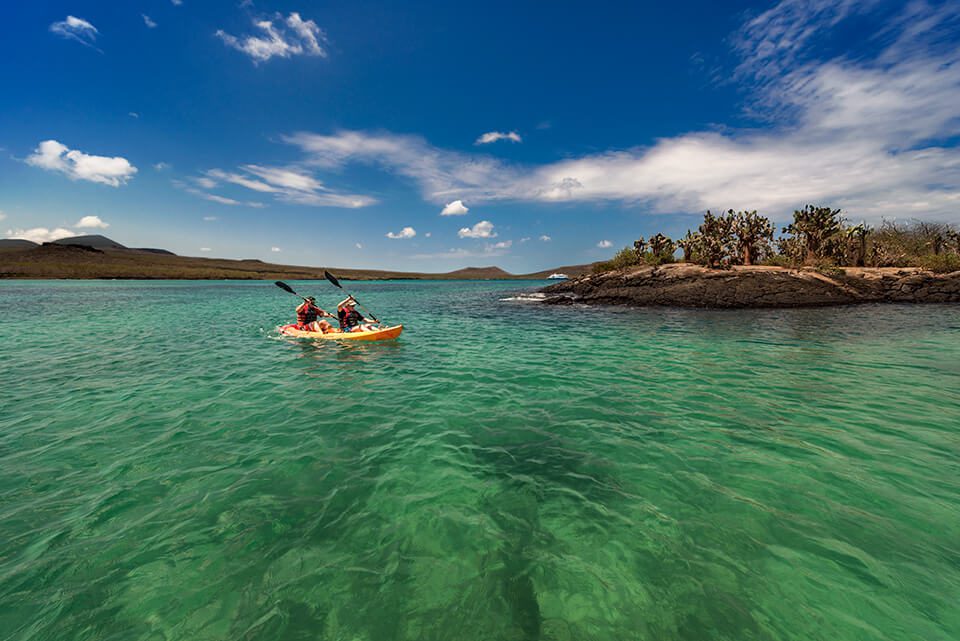
Which is the best Galapagos cruise itinerary?
There really is no “best itinerary” itinerary when it comes to Galapagos. It all really just depends on how much time you have available and if there’s any specific place or animal that you’re hoping to see. Otherwise, you will get great, if not the best island and wildlife coverage, in the Galapagos on any single one of our itineraries. In fact, if time permits, we highly encourage you to combine itineraries back-to-back to get a better sense of the Galapagos!
How many days should I go to Ecuador for?
In order to get a comprehensive vision of the real Ecuador, the suggested time to visit is about two weeks. Consider staying 3 days in Quito and the highlands, 3 days in the rainforest or cloud forest – located very close to Quito – and 5 days in the Galapagos Islands. This should be enough time for you to explore the country’s diversity.
We encourage our guests to stay in the Galapagos for as many days as they can (never exceeding the 90-day limit, however!), but the minimum recommended number of days that anyone should visit the archipelago for is 5 days. Keep in mind that you will lose half a day getting in and then half a day getting out of Galapagos. When it comes to exploring the Galapagos aboard an expedition vessel, your first day aboard will involve an afternoon visit, but on your last day, you will have to get ready to leave in the morning. The more days you stay, the more chances you will have to see all the iconic Galapagos BIG15 species and the numerous and diverse islands throughout the archipelago.
How’s the terrain in the Galapagos? How difficult are the hikes in Galapagos?
The terrain in the Galapagos varies from island to island and from one visitor site to the other. At some visitor sites, guests will find man-made trails made of dirt, cement, or wood that make for easier hikes, but amount to less than 5% of the trails. All other sites maintain their natural terrain which is usually composed of lava rocks, gravel, sand, volcanic boulders (on which you have to watch your balance and try to jump from one boulder to the other as if on a river), and lava flats. In general, most trail range from an easy- to moderate-level of difficulty. What type of shoes do you need trek across all these properly? Keep on reading!
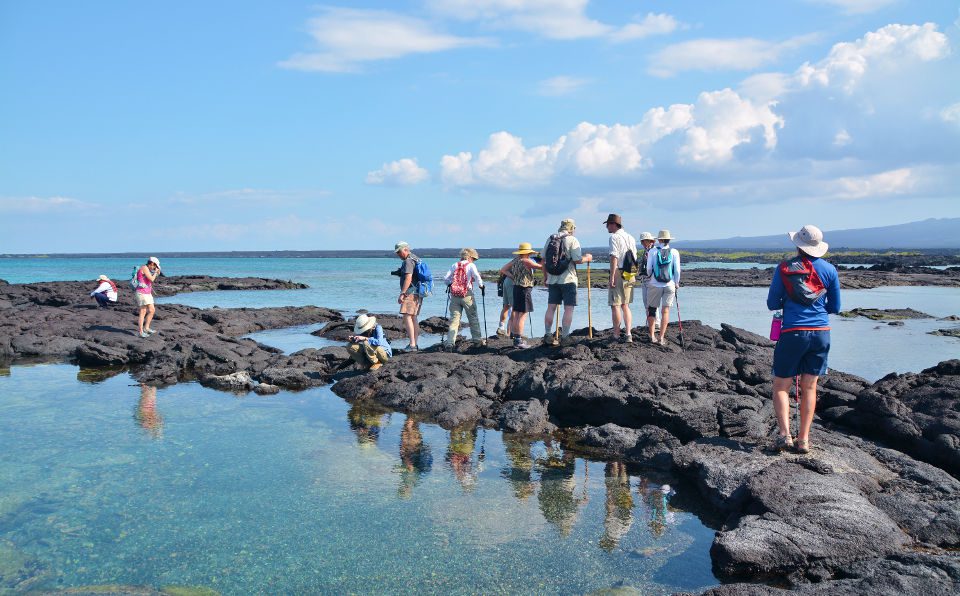
What should I pack for the Galapagos Islands?
We’re glad you asked! Read our handy blog on what to wear for your Galapagos cruise right here!
What kinds of shoes do I need for hikes in the Galapagos?
Because the Galapagos are islands, visitors usually (but erroneously) assume that sandals will be enough to move around. Keep in mind that the archipelago is of volcanic origin which, as we mentioned before, makes for an incredibly rugged and otherworldly type of terrain. Even though aboard our boats and at the Finch Bay Galapagos Hotel we offer walking sticks that our guests can take with them for hikes, we strongly suggest bringing hiking boots, with good traction or grip on the soles in order to protect your feet and ankles. If they are high cut hiking shoes, even better! That way you’ll avoid running the risk of accidentally twisting your ankle!
How long are the hikes?
No hike in the Galapagos is longer than a mile. The reason trails are measured in miles is because the United States Department of the Interior oversaw the design of the trails, making them friendly enough for all visitors. The only hike that is longer than a mile is at Tortuga Bay, which is a mile and a half (a part of which is along a paved path).
When can I see sea lion pups in Galapagos?
Most sea lions are born during the peak of the dry season (August and September, sometimes as late as October). We call them “pupping months.” Sometimes, during explorations, guests are lucky enough to see a sea lion giving birth!
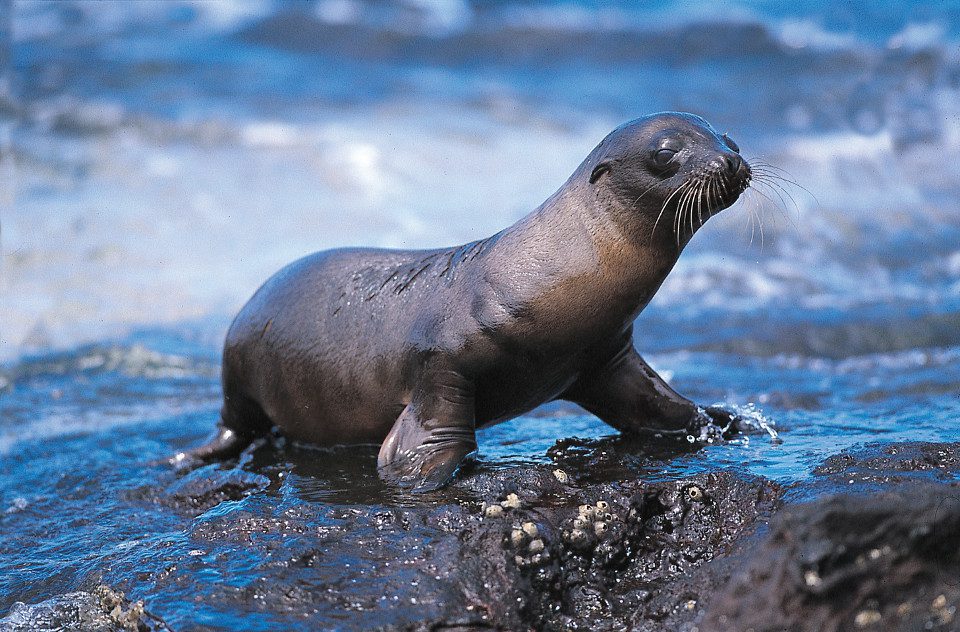
Are the Galapagos suited for people with disabilities?
No. Due to the geography and terrain of the islands, they are not suited for people with disabilities pertaining to mobility.
Are Galapagos boats accessible for people with disabilities?
No. Our boats don’t have elevators and are not suited for people with disabilities pertaining to mobility.
Here’s some more information regarding traveling to Ecuador
What’s the weather like in Quito?
Quito is best described as spring-like all year round. However, that means the weather can be a little “indecisive” in the sense that it can go from warm and tropical to cold and chilly in just a couple of minutes. We suggest dressing up in layers and bringing a raincoat just in case.
What’s the weather like in Ecuador?
Being on the equator, Ecuador has no seasons. Instead, it’s divided between a rainier and drier season that alternates in the highlands, the coastal region, and the Amazon basin. The coast is known to have generally more humid and warmer weather, much like the Amazon basin to the east and the cloud forest to the west of the Andes. The highlands are colder at night and usually sunny during the day.
Looking for an in-depth blog about Weather in Ecuador? Click here.
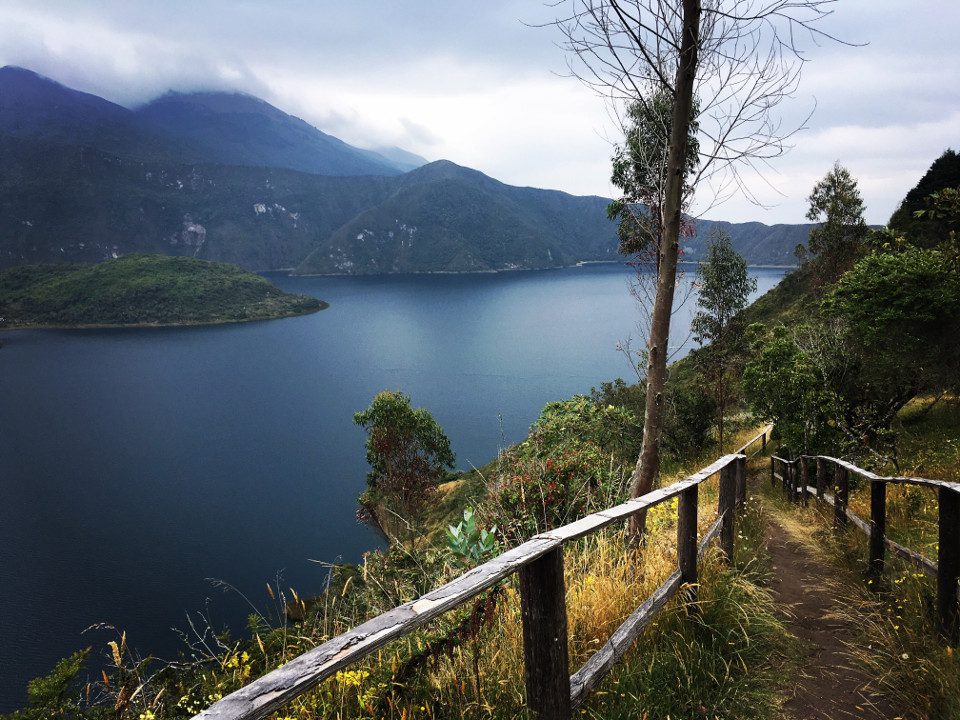
How expensive are taxis in Ecuador?
Around $25 USD per ride from Quito’s airport to the Historic Center. Routes within the city of Quito itself rarely ever exceed $5. Rates will vary throughout the main cities in Ecuador. It’s safest to have your hotel or a restaurant call you a cab on your behalf, or use an application such as Uber, Cabify or EasyTaxi.
Can I travel to Ecuador and/or the Galapagos Islands with children?
Children over six will have no problem in the mainland or Galapagos excursions. Hotels in the major cities cater to children of all ages, providing children’s menus, baby sitters and extra beds/cribs. We do not recommend bringing very young children (under the age of 6) to some of our tours such as the Galapagos or other adventurous destinations.
How safe is Ecuador?
While Ecuador is a relatively safe country, it never hurt to keep a careful eye on your belongings. The safest option for highly sensitive items (cash, copies of documents, etc.) is a money belt worn under clothing. Keep spare cash in a separate purse for easy access. Like in most big cities, heavily loaded wallets or pockets are attractive targets for pickpockets. Remember to leave your documents and valuables in the safety deposit box of your hotel. In the city, you just need to carry the copy of your passport. After 6:00 p.m., it is best to call a taxi using an App or request that your hotel or restaurant order one.
Are there tax and service charges in Ecuador?
A 12% sales tax is added to all purchases in Ecuador. A service tax of 10% (a.k.a. tip) is almost always added to hotel and restaurant bills. In Quito, there is also a small city hotel tax.
How much should I tip in Ecuador?
Gratuities often represent part of a worker’s earnings and are regarded as an incentive to provide the best service possible. Here are some guidelines: adjust them to represent the service you receive and the thanks you want to express. If a service charge (10%) is included in your bill, no additional tip is required. However, if you received particularly good service, an extra 5%, in addition to the service charge, will be highly appreciated. Tips for bellboys are usually equivalent to US$1 per bag; chambermaids US$1 a day; for room service 10% of the bill is already charged as service charge. Taxi drivers are not tipped in Ecuador.
What’s the occupancy at Mashpi Lodge?
Mashpi Lodge has occupancy for 48 guests.
Did we forget anything? Be sure to mention it in the comments section below!

Javier Garcia

Eduardo Silva

Carolina Escobar
START PLANNING YOUR TRIP

Javier Garcia

Eduardo Silva

Carolina Escobar
Get in touch for more
CONTACT US
Remember:
Don’t underestimate the equatorial sun!
Ecuador is on the equator (you guessed right! that is where its name comes from), which means it’s also one of the places closest to the sun. Even though the weather might feel nice and cool, for example, up in the highlands or during a cloudy day at the beach, remember to wear sunscreen at all times! Don’t get bitten by the painful teeth of the equatorial sun!
Now, put on that sunscreen and take advantage of this unique opportunity!


